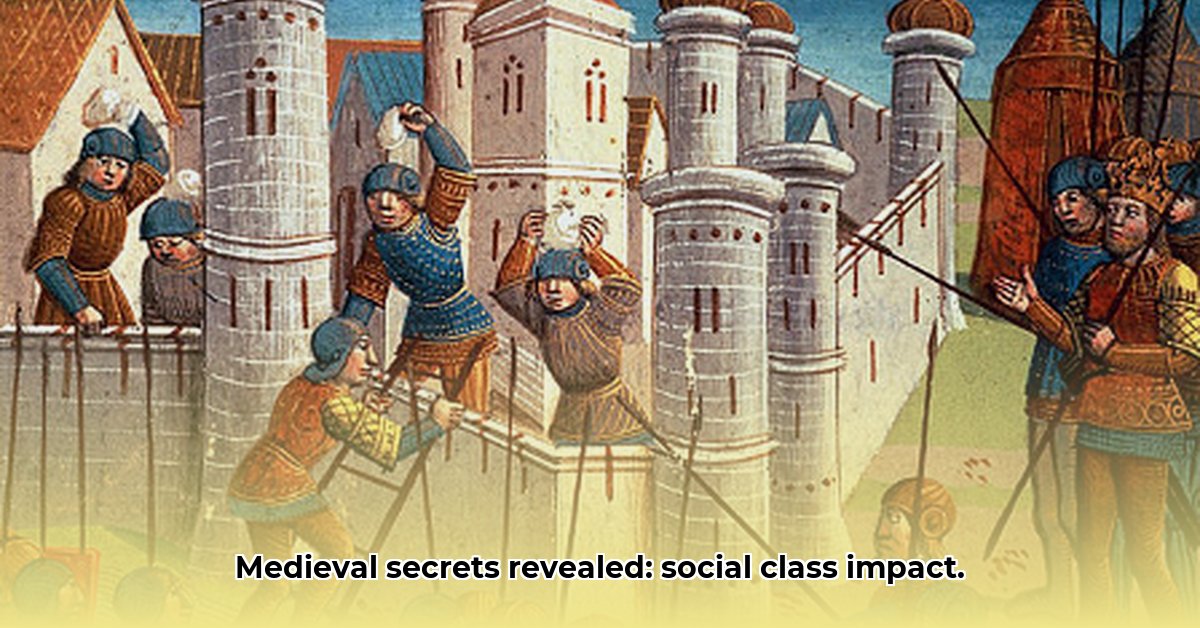
Medieval Architecture and Social Hierarchy: A Stone Diary of Daily Life
Medieval Europe's architecture wasn't merely aesthetic; it served as a powerful reflection of its complex social structure. Buildings, from grand castles to humble peasant huts, vividly portray the societal hierarchy and the lives of its inhabitants. This article explores how architectural styles and construction directly correlate with the social classes of the time, providing a unique lens through which to understand medieval society. We will examine how castles, cathedrals, manor houses, and peasant dwellings reveal the realities of medieval life, highlighting the vast disparities in wealth and power, as well as the surprising glimmers of social change. How did the materials used, the scale of construction, and even the location of a building reflect the social standing of its inhabitants? Let's investigate. For more on medieval homes, see this resource.
Castles: Fortifications of Power and Prestige
Castles weren't merely residences; they were potent symbols of authority and power, meticulously designed to project an image of invincibility and dominance. Massive stone walls, imposing keeps, and strategically advantageous locations served not only defensive purposes but also functioned as potent visual statements. Structures like Windsor Castle or Château de Vincennes, with their imposing fortifications, were not built for comfort but to communicate the unassailable power of the ruling class – kings, queens, and nobles. The sheer scale of these structures, demanding immense resources and labor, underscores the wealth and influence concentrated at the apex of medieval society. How did the sheer size and defensive capabilities of these castles reinforce the power of the ruling elite? They served as stark reminders of who held the reins of power.
Cathedrals: Embodiments of Ecclesiastical Authority and Wealth
The Church held immense sway over medieval life, and this influence is strikingly evident in the architecture of its cathedrals. These awe-inspiring structures, reaching towards the heavens, were far more than mere places of worship. They represented the Church's immense wealth and spiritual authority, dwarfing other buildings in scale and opulence. The intricate carvings, breathtaking stained-glass windows depicting biblical narratives, and the sheer architectural grandeur of cathedrals like Chartres and Notre Dame (prior to the fire) served as powerful visual statements of the Church's dominance. Where did the Church acquire the vast resources necessary for such ambitious construction projects? While a subject of ongoing historical debate, it's clear that taxes and the labor of numerous individuals, including the peasantry, significantly contributed. This brings up a compelling question: Did the immense scale of these cathedrals reflect the actual spiritual power of the Church only or also its economic control within medieval society?
Manor Houses and Peasant Dwellings: Contrasting Realities
The stark contrast between manor houses and peasant dwellings further emphasizes the deep chasm separating the social classes. Manor houses, the homes of the landed gentry, varied in size and luxury depending on the wealth of their owners, but even the most modest manor houses generally exceeded the quality of peasant dwellings in size and amenities. Peasant homes, on the other hand, were typically simple, constructed from readily available materials like wood and mud. Their functionality reflected the realities of their lives, closely tied to agricultural labor. Often located close to the fields they worked, these humble dwellings stand in stark contrast to the grandeur of castles and cathedrals, vividly illustrating the immense disparity in living standards. How did the differences in building materials and construction techniques reflect the economic disparities of the era? They reveal the stark realities of a society divided by wealth and privilege.
The Black Death: A Catalyst for Social and Architectural Change
The devastating Black Death (1347-1351) profoundly altered medieval society. The plague's staggering mortality rate (estimated at 30-60% of the population) caused a dramatic upheaval in the social order. The resulting labor shortage empowered surviving peasants, who could negotiate for better wages and conditions, slowly chipping away at the rigid structures of feudalism. The plague's impact varied across regions, leading to diverse responses and uneven social and economic recovery. The post-plague era shows a gradual evolution in architectural styles, signaling a shift in social dynamics. Historians like Professor John Aberth (University of Oklahoma), specializing in the Black Death's impact, highlight the disease's role in destabilizing the medieval social order, arguing it “accelerated pre-existing tensions and fostered new social and economic realities.” What was the long-term effect of the Black Death on the social hierarchy and thus on the type of buildings constructed in the late medieval period? Further research is pivotal in answering this question.
The Rise of a Middle Class: New Architectural Expressions
Following the Black Death, a nascent middle class emerged, gradually altering the socio-economic landscape of medieval Europe. Though lacking the resources to build castles or cathedrals, their growing prominence is reflected in the increase of smaller, more modest homes in towns and cities. This architectural expansion hints at a new economic reality and a more complex social structure, gradually moving beyond the rigid feudal hierarchy. This demographic shift is a fascinating study, requiring deep analysis in order to determine the precise nature of this societal change and its relationship to architectural styles that emerged after the Black Death. How did this growing middle class influence urban development and architectural design in the late medieval period? This is a continuing area of study for historians of medieval architecture.
A Lasting Legacy
Medieval architecture serves as a remarkable testament to the social structures and dynamics of its era. Castles, cathedrals, manor houses, and peasant dwellings, each telling a distinct story, collectively provide a powerful glimpse into the lives of medieval people, highlighting the vast disparities in wealth, power, and living conditions. The study of medieval architecture continues to expand our understanding of this period, revealing the intricate interplay between social structures, economic realities, and the built environment. By meticulously analyzing these structures—their materials, designs, and locations—we gain a profound appreciation for the complexities of medieval European society and the lasting legacy of its architectural achievements.